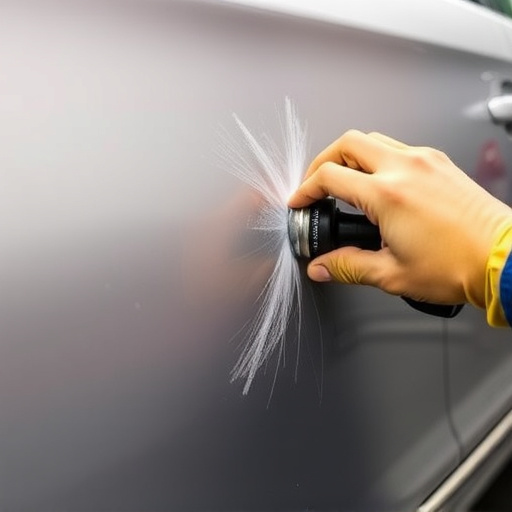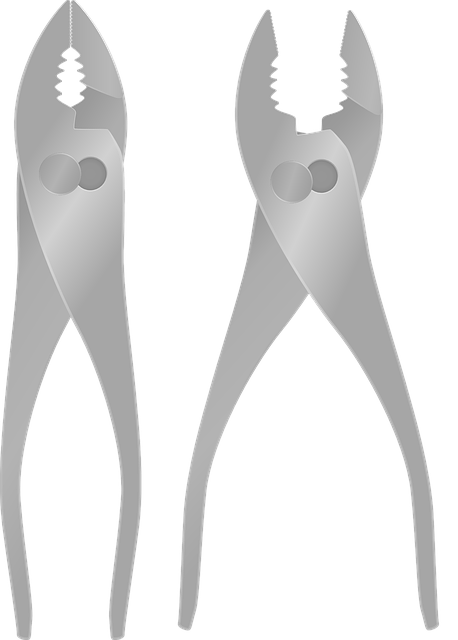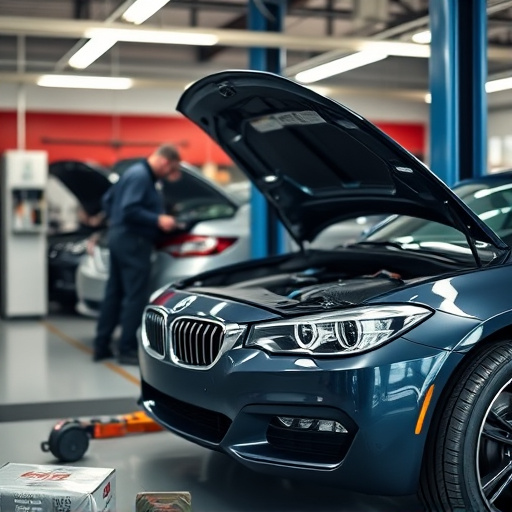Electronic measuring equipment is a vital toolset across industries, offering precise measurements of physical attributes and electrical parameters. Modern models provide adaptability for various tasks, intuitive interfaces, and wireless data transfer, enhancing accuracy and efficiency in auto body repair. Calibration by trained professionals ensures accuracy within specified tolerances, while regular maintenance extends equipment lifespan and guarantees optimal performance, critical for high-quality repairs and bodywork integrity.
“Unraveling the intricacies of electronic measuring equipment is essential for professionals across industries. This article guides you through the key elements that define these versatile tools, from understanding their core functions to identifying essential features in modern devices. We delve into crucial aspects like calibration and maintenance practices, ensuring accurate readings and reliable performance.
By exploring these topics, you’ll gain a comprehensive insight into selecting, using, and maintaining electronic measuring equipment effectively.”
- Understanding the Core Functions of Electronic Measuring Equipment
- Essential Features to Look for in Modern Devices
- Calibration and Maintenance: Ensuring Accurate Readings
Understanding the Core Functions of Electronic Measuring Equipment

Electronic measuring equipment plays a pivotal role across various industries, from precision engineering to auto body repair. At its core, this equipment facilitates the accurate measurement and analysis of physical quantities like length, width, thickness, temperature, resistance, and voltage. Understanding these fundamental functions is crucial for maximizing efficiency and ensuring precise results.
For instance, in an auto body shop, electronic measuring tools enable technicians to assess damage meticulously, facilitating accurate repairs. In auto repair shops, they help diagnose electrical issues by measuring voltage and resistance, ensuring that vehicles are restored to optimal working condition. Thus, familiarizing oneself with the core functions of electronic measuring equipment is essential for professionals in fields like auto body repair and beyond.
Essential Features to Look for in Modern Devices

In today’s digital age, modern electronic measuring equipment plays a pivotal role across various industries, from precision engineering to collision repair shops and auto body repairs. These devices are no longer mere tools but sophisticated instruments designed to enhance accuracy and efficiency. When selecting or evaluating electronic measuring equipment, several key features stand out as essential for ensuring optimal performance and reliability in demanding environments like vehicle bodywork applications.
Firstly, consider the device’s capacity for precise measurements and its adaptability across different tasks. Advanced models offer multi-functional capabilities, allowing technicians to measure various parameters, including length, width, thickness, angle, and even moisture content, all within a single compact unit. Moreover, intuitive interfaces with backlit screens and user-friendly controls significantly reduce training time and increase productivity in auto body repair settings. Additionally, the ability to store and transfer data wirelessly is a game-changer for collision repair shops, streamlining record-keeping and facilitating seamless communication between teams and stakeholders.
Calibration and Maintenance: Ensuring Accurate Readings

The reliability and accuracy of electronic measuring equipment are paramount, especially in industries like collision repair shops and vehicle bodyshops where precise measurements are crucial. Calibration and regular maintenance are essential practices to ensure these tools provide consistent and dependable results. Calibration involves adjusting and testing the equipment against known standards to guarantee it measures within specified tolerances. This process should be performed by trained professionals who understand the specific requirements of various electronic measuring equipment, such as wheel alignment systems, laser measurement devices, and 3D scanning tools.
Regular maintenance includes cleaning, inspecting, and replacing worn-out components. For instance, in a vehicle body repair setting, keeping wheel alignment equipment clean and well-maintained is vital to maintain accuracy. Maintaining these tools extends their lifespan, reduces potential errors, and guarantees consistent performance, which is critical for high-quality collision repair shop operations and ensuring the integrity of vehicle bodywork.
Electronic measuring equipment plays a pivotal role in ensuring precision and accuracy across various industries. By understanding the core functions, identifying essential features, and prioritizing regular calibration and maintenance, users can maximize the reliability of their measurements. These key elements empower professionals to make informed decisions based on accurate data, ultimately driving efficiency and innovation within their fields.














